Have you ever heard of the extraordinary story of a dog who became the most famous traveled postal dog, thanks to his love for mail?
Meet Owney, a terrier mix that became a beloved mascot for the Railway Mail Service and the United States Postal Service for nine years.

Amazing, right?
But you may wonder, how did Owney become a nationwide postal dog and a cherished icon of the postal service in the first place?
Don’t fret. I’ll share with you the fascinating tale of this legendary postal dog. So read on!
The Post Office Dog
In 1888, an abandoned border terrier had made its way through the back door of the Albany post office and had fallen asleep on a mailbag. When the postal workers arrived that morning, they discovered him sleeping in a mailbag.
At first, the workers thought it was the dog of Owen, another postal worker. But Owen clarified that he was not the dog’s owner.
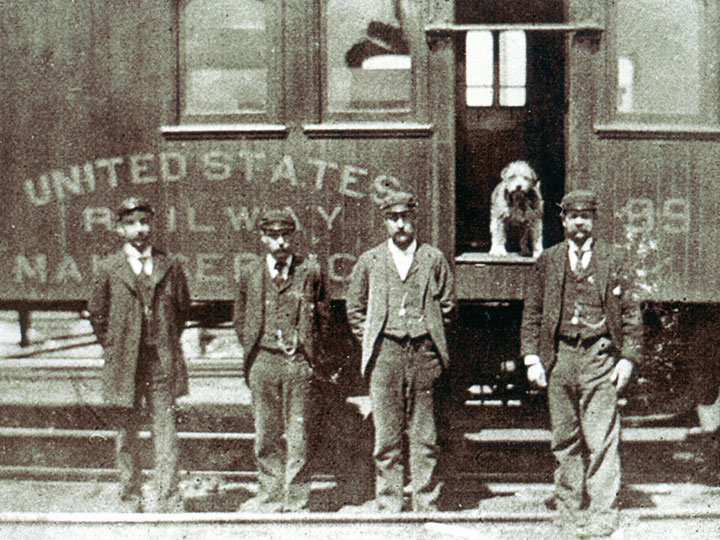
Despite the post office rules, the dog was allowed to stay and was then adopted. The mail clerks also decided to call the dog “Owney,” and the name stuck.
Owney seemed to love the mailbags’ scent and would sleep on them. He was very protective of his mailbags and always stayed close to them.
But, if a uniformed postal worker needed to use the bag, Owney would willingly move to a different, cozy spot. He trusted only the postal workers to touch them.
When the mailbags were moved, Owney went with them—first to the mail wagon and then to the railway station. He would protect the railroad mailbags and journey with them from one station to another.
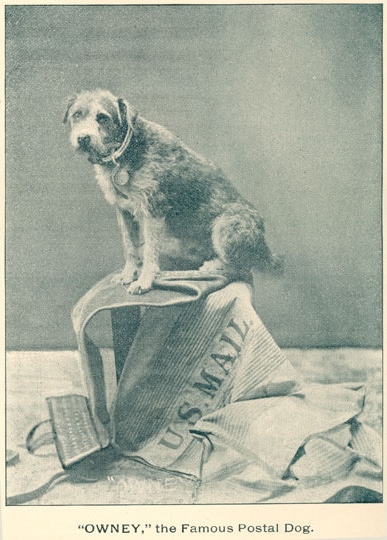
According to the legend, Owney hopped aboard unnoticed as mailbags were loaded into the railcar one day. He rode the train 150 miles south to New York City.
When the postal workers in New York City found Owney in their post office, they contacted the Albany post office on how to handle him. The Albany postal workers responded, “mail him back.”
Upon his return, Owney was given a leather collar with a tag directing that he be sent to the Albany post office.
Owney then became the guardian of railroad mailbags. He traveled with the mailbags from station to station along the New York Central railroad system, which went as far east as Boston, south to New York City, and west to Chicago and beyond.
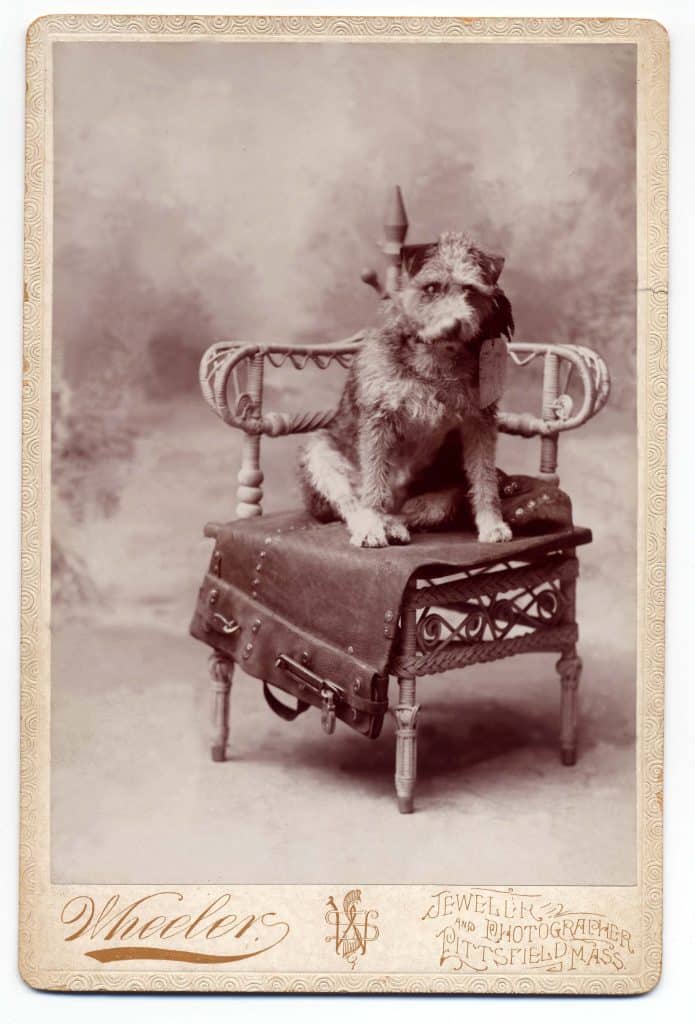
He was also considered good luck by the railroad since no train he rode on was ever in a wreck.
On Owney’s long trips, the postal clerks in Albany began to worry about identifying the dog and returning him back to them. Because of this, they bought a dog collar with a metal tag that read: “Owney, Post Office, Albany, New York.”
After that, postal workers at various railway post offices added their own tags to Owney’s collar. The collection grew until the tags “jingled like sleigh bells” when Owney moved.
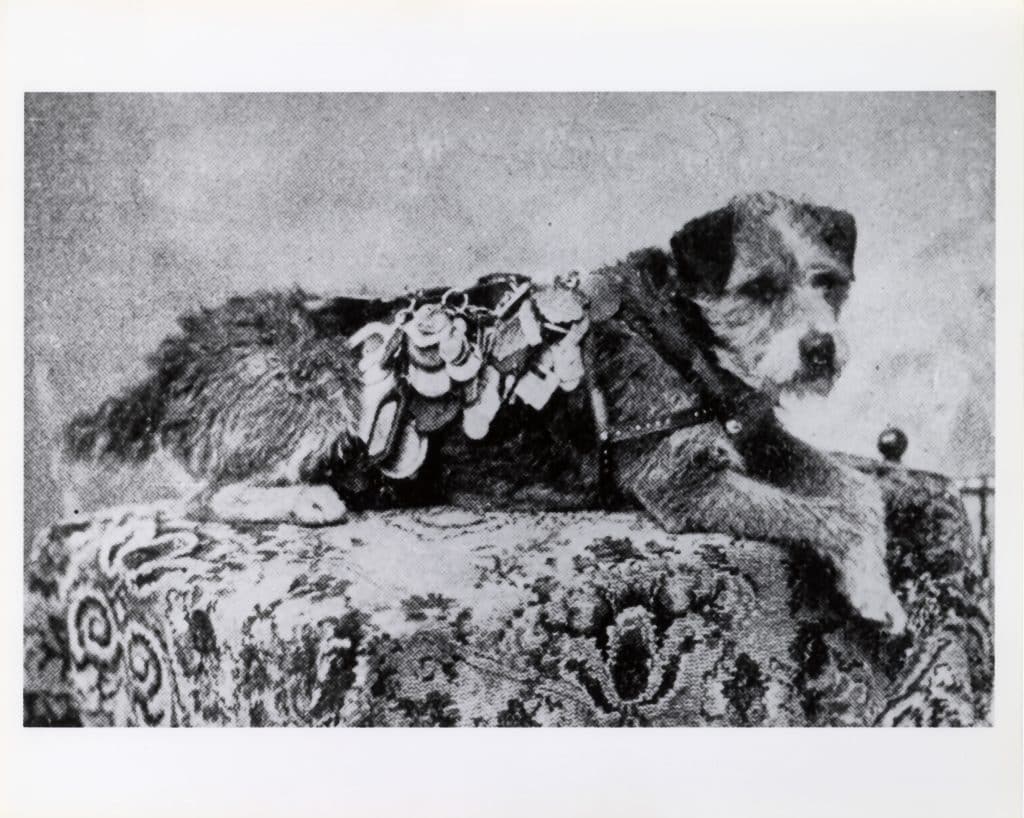
Due to the increasing number of tags on Owney’s collar, Postmaster General Wanamaker presented him with a coat to display them all. He also declared Owney as the Official Mascot of the Rail Mail Service.
The actual number of dog tags Owney received is unknown. However, according to one source, he was given 1,017 medals and tokens.
Some of these tags did not survive over time. However, the National Postal Museum currently holds 372 Owney tags in its collections.
Owney’s International Mail
Owney once traveled to Montreal, Canada, one of the dog’s most famous travels.
During this journey, the postmaster kept him in a kennel and demanded $2.50 to feed Owney. The Albany post office paid the bill, and Owney was sent back home.
In 1895, Owney embarked on a journey around the world with mailbags on trains and steamships. On August 19, 1895, he boarded the steamship Victoria with 24 sacks of mail.
The trip lasted for four months, during which Owney traveled throughout Asia and Europe. He returned to New York City on December 23 and then to Albany after the 132-day adventure.
Los Angeles Times reported Owney’s journey included visits to Asia, North Africa, and the Middle East. Some even claimed that the Emperor of Japan granted the dog two passports and several medals with the Japanese coat of arms.
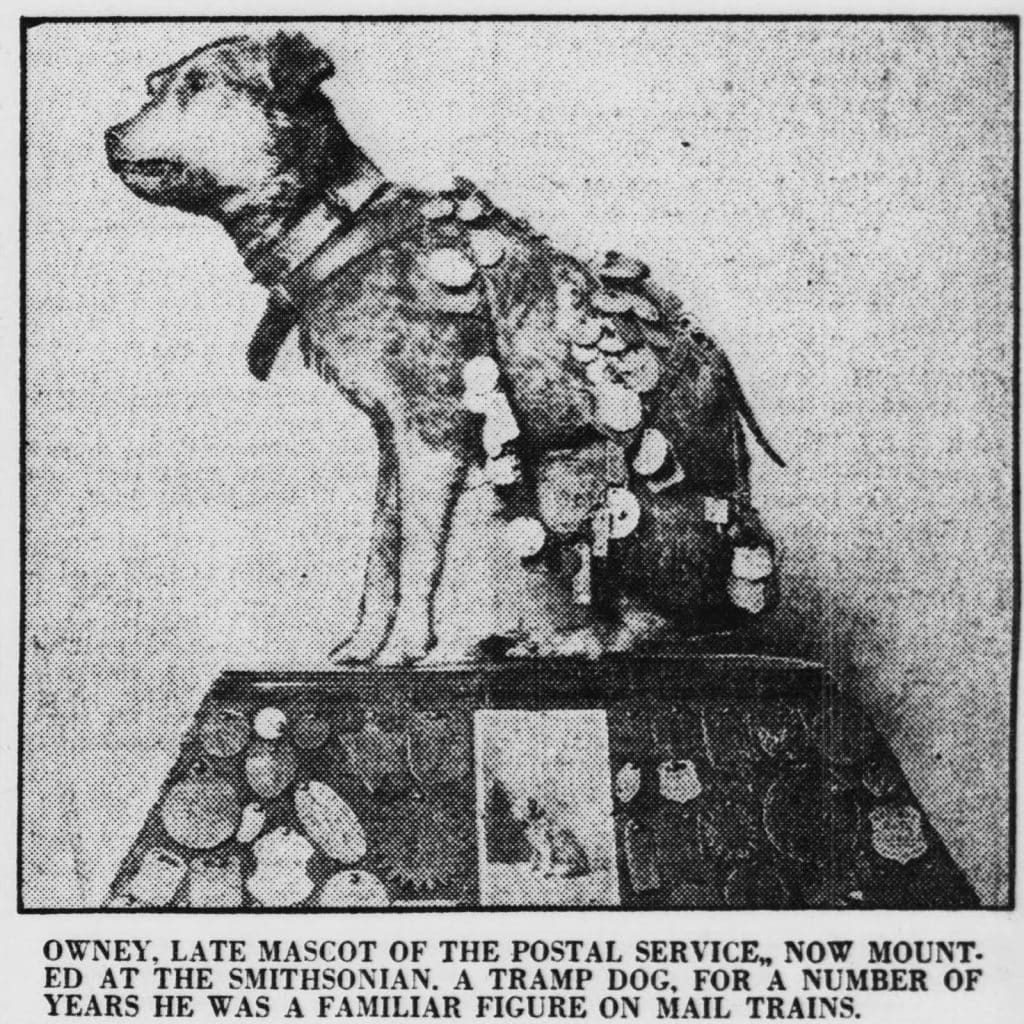
Upon his return, Owney became a world-famous dog, with newspapers nationwide covering his story.
Owney’s Death and End of Service
But as Owney grew older, the Albany postal workers were advised to keep him in the city.
J. M. Elben, a mail clerk from St. Louis, offered to take Owney in, but the Chicago manager of the Railway Mail Service insulted Owney and called him a “mongrel cur.” The manager also instructed his staff to prevent Owney from boarding future mail trains.
Yet, some mail clerks from St. Louis defied the manager’s orders and allowed Owney to embark on his final journey in the summer of 1897.
However, something happened during Owney’s final trip on June 19, 1897. The concrete details of the incident remain unclear. However, newspapers around the country reported the story of Owney’s death.
They documented that Owney became aggressive due to his old age and illness. The dog allegedly attacked a postal clerk and a U.S. Marshal in Toledo, Ohio, and was shot and killed on the orders of the local postmaster. The Chicago Tribune termed his death “an execution.”
Some accounts state that a postal clerk in Toledo chained Owney to a basement post, which may have caused his aggression. Whatever the reason, Owney was put down in Toledo on June 11, 1897.
Honors and Exhibits
Did you know that for more than 11 years, Owney traveled over 48 states and about 140,000 miles across the country and around the world?
This made Owney a beloved icon of the postal service, leaving a lasting legacy as a symbol of the important role of postal workers in delivering mail.
After his death in 1897, mail clerks raised the money for his remains to be preserved by a taxidermist as the mascot of the US Postal Service.
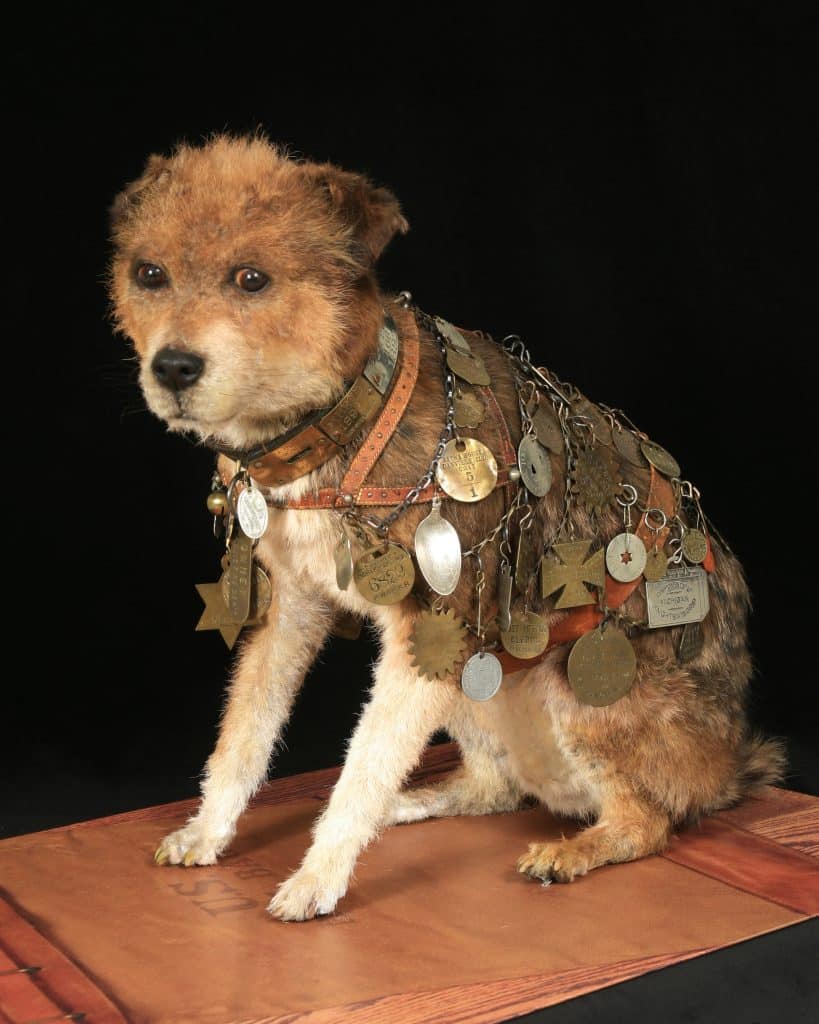
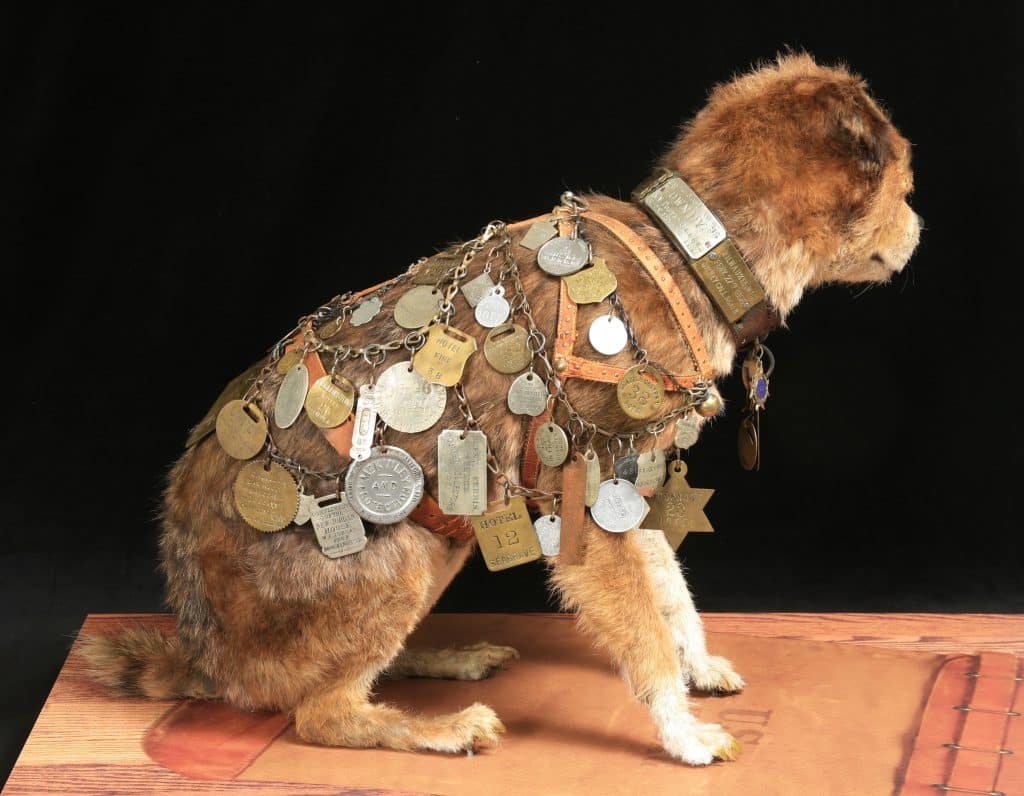

In 1904, Owney was first displayed at the St. Louis World’s Fair. The Post Office Department transferred Owney to the Smithsonian Institution in 1911, along with many of his tags and other artifacts.
The Smithsonian Museum, which is now known as the National Museum of American History, displayed Owney from 1964 to 1992. In 1993, he was moved to the new National Postal Museum, where he is currently on display next to a fabricated Railway Post Office train car.
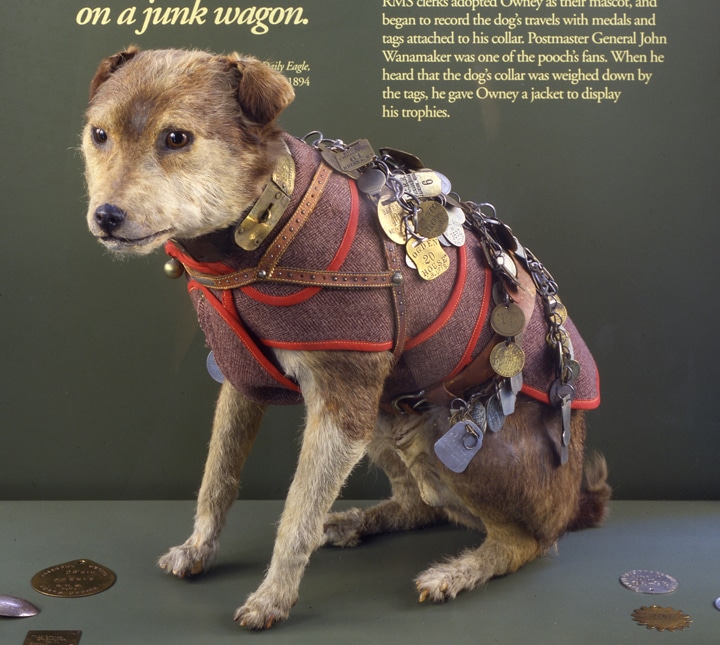

On July 27, 2011, the postal service released a commemorative stamp in Owney’s honor.
Before I end this post, here’s an interesting fact for you:
Over the years, Owney’s remains experienced deterioration. In 2011, he underwent a makeover. His taxidermy needed patching up, and some of his body parts were replaced with a pig’s ear and a rabbit’s foot.

At the time of the makeover, Owney was estimated to be around 124 years old.







